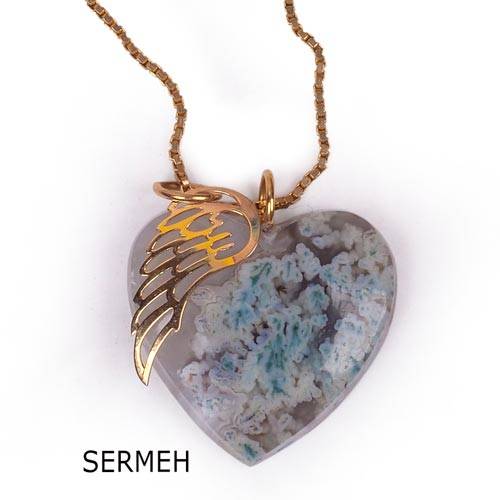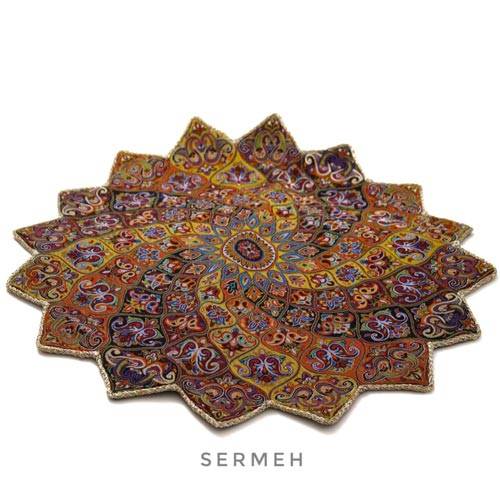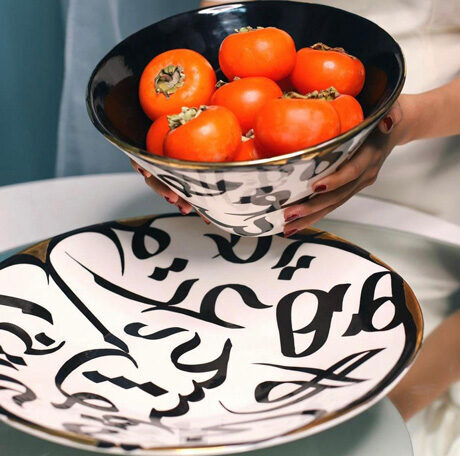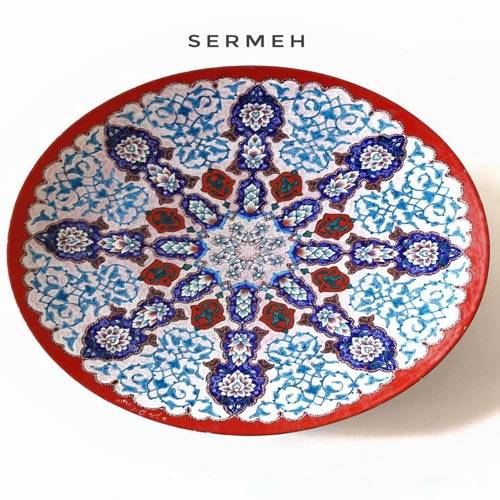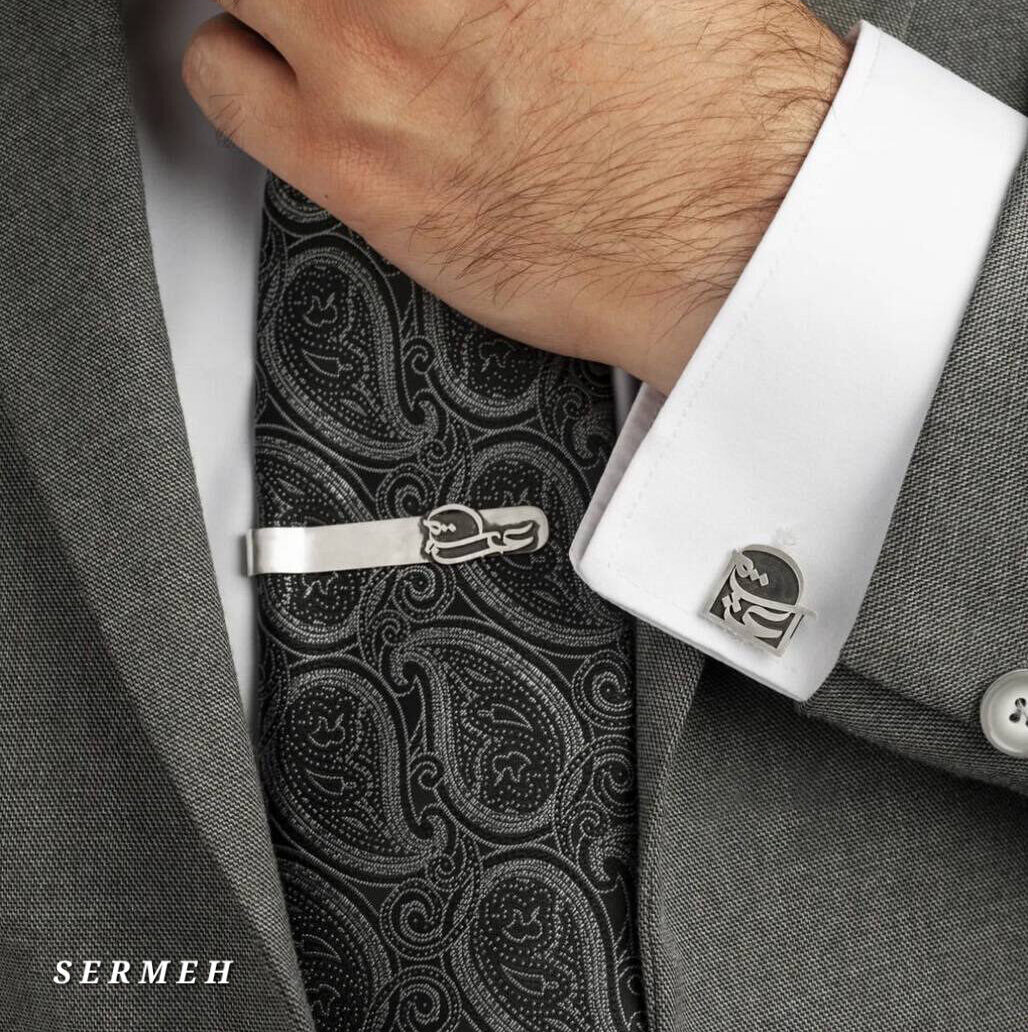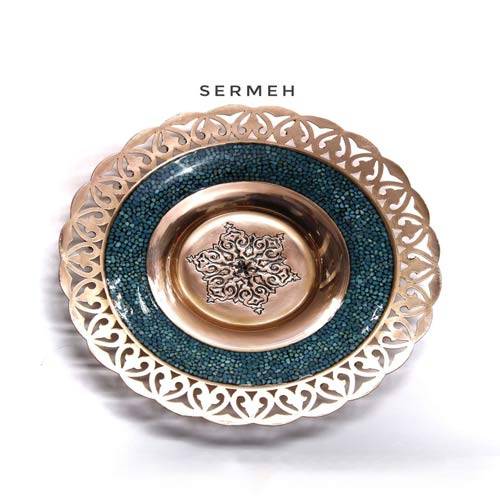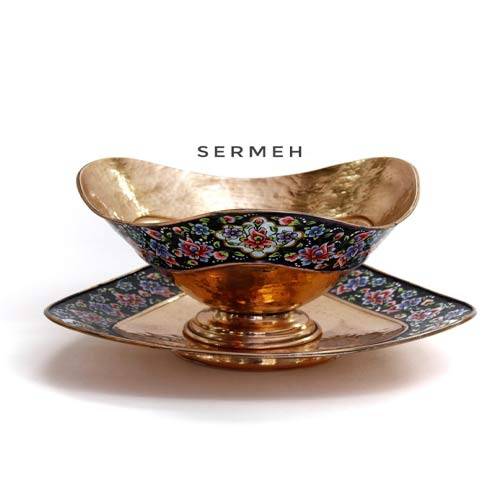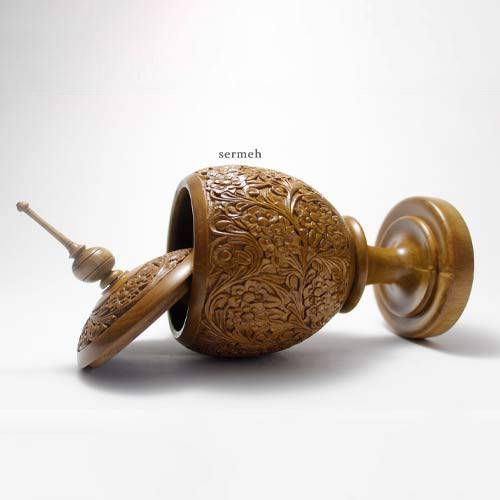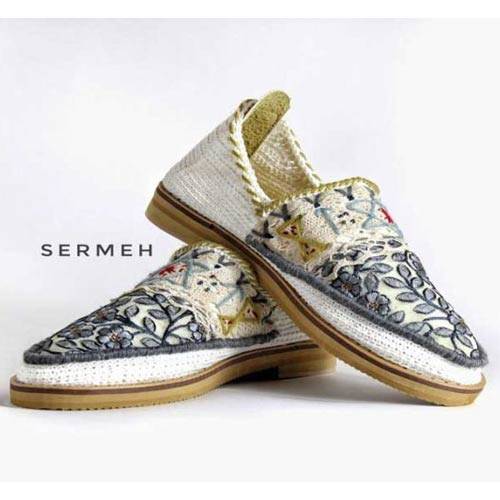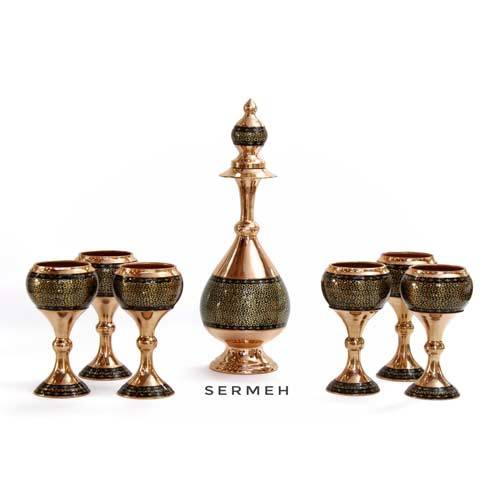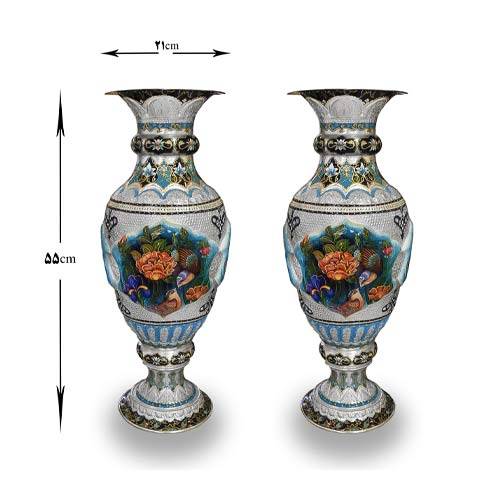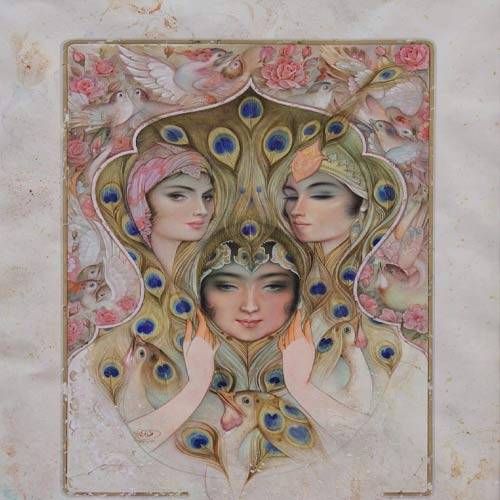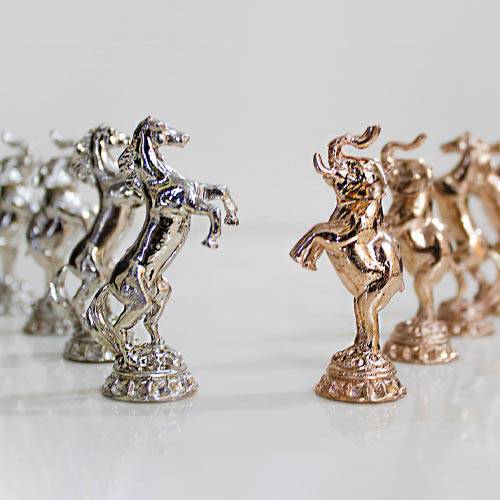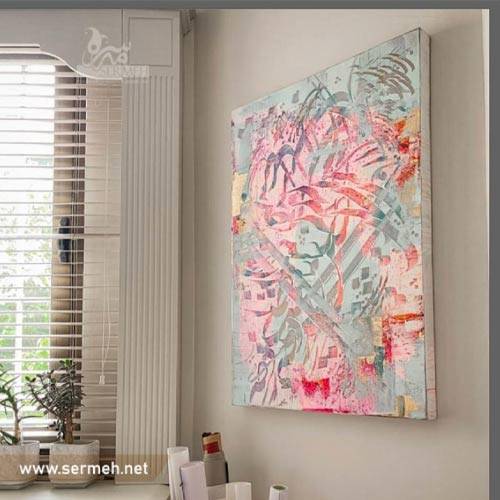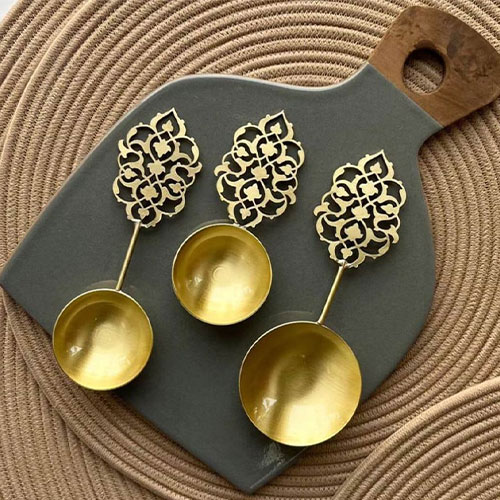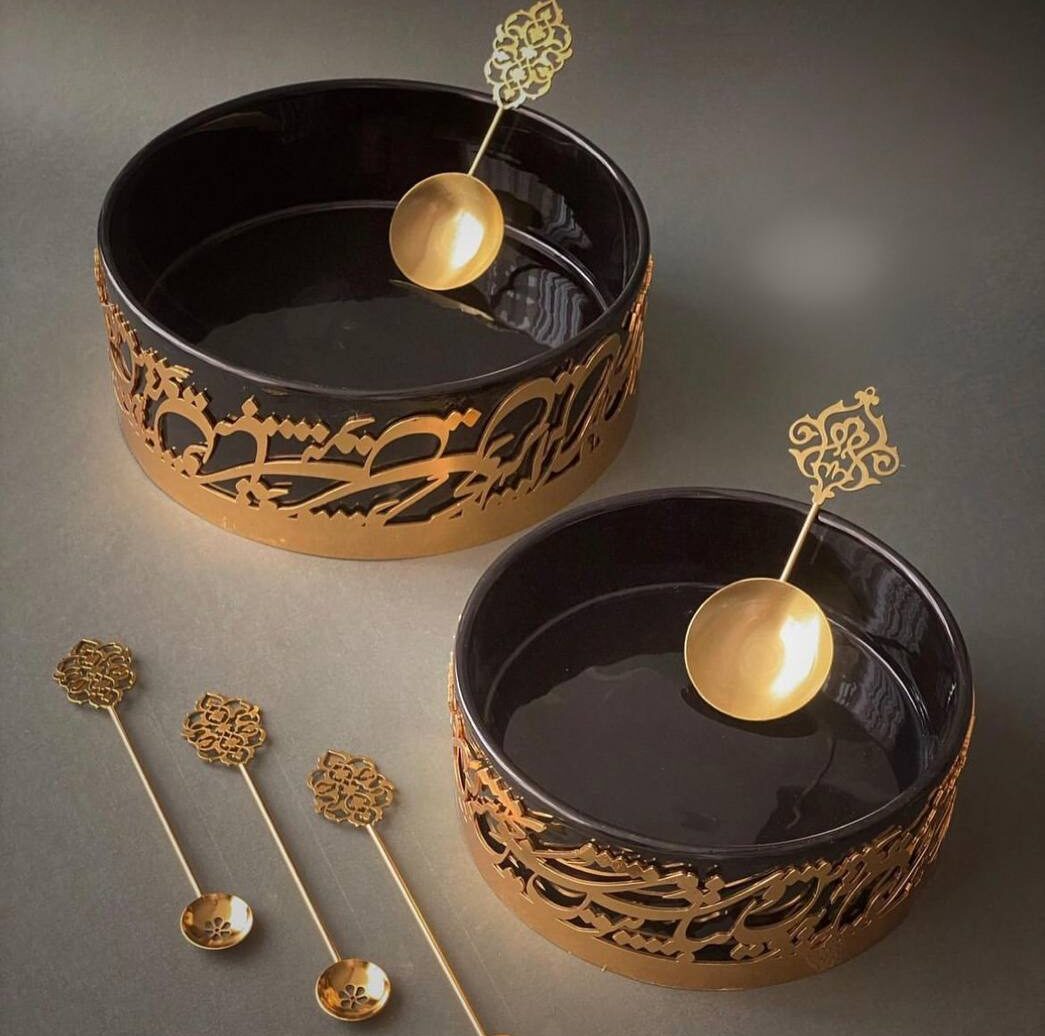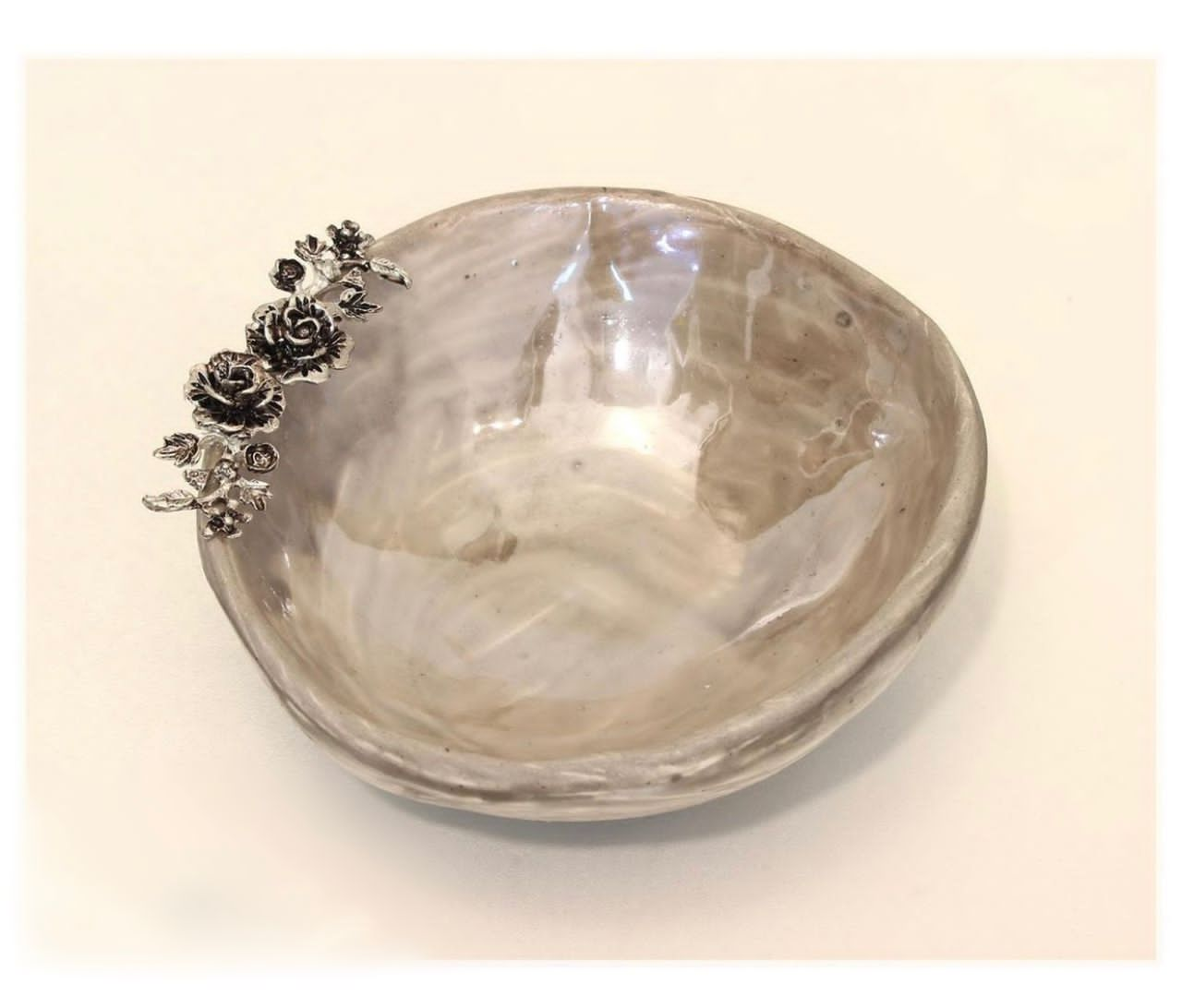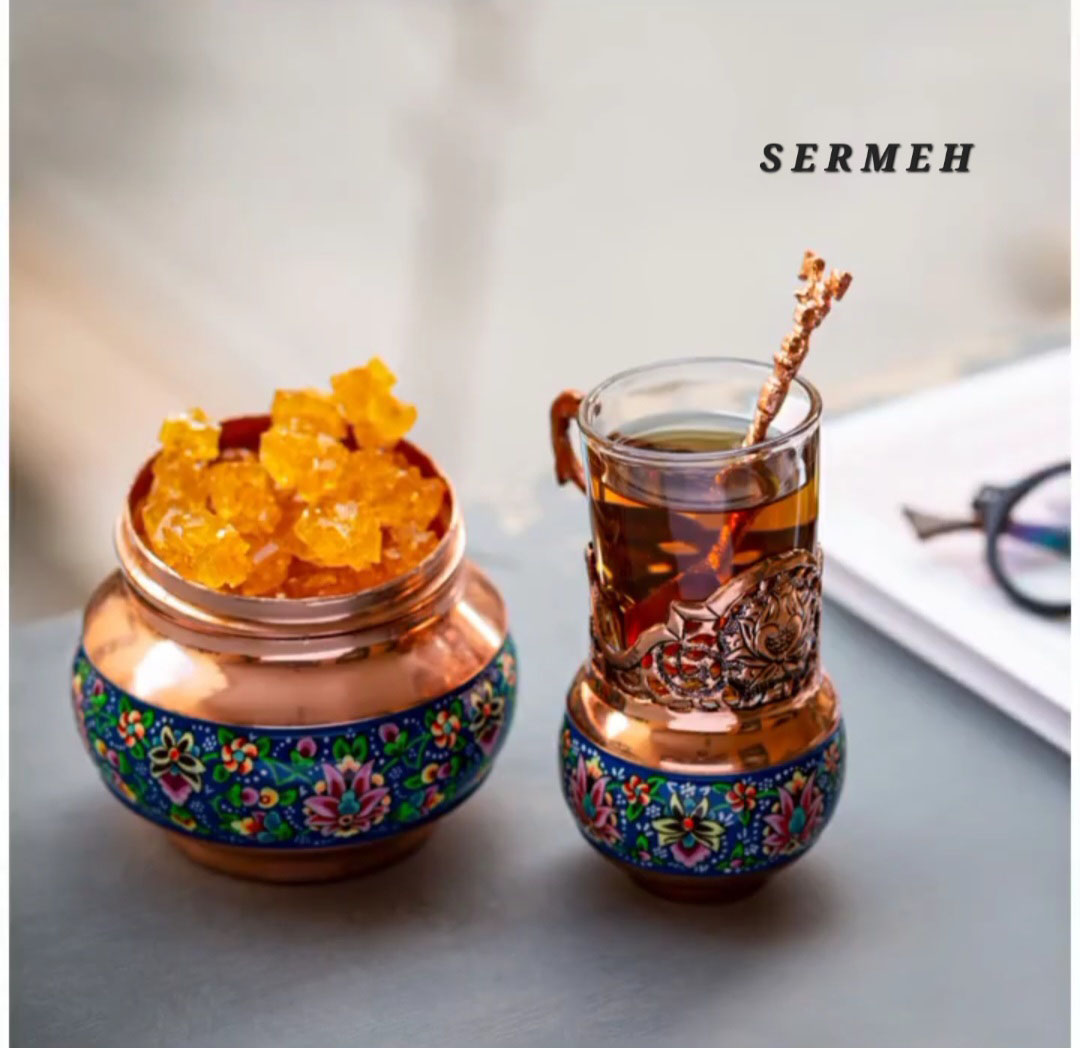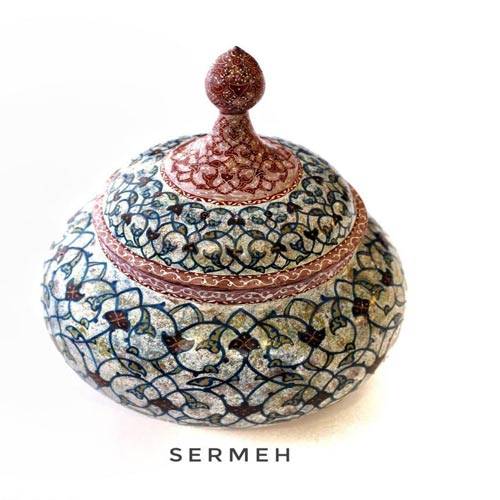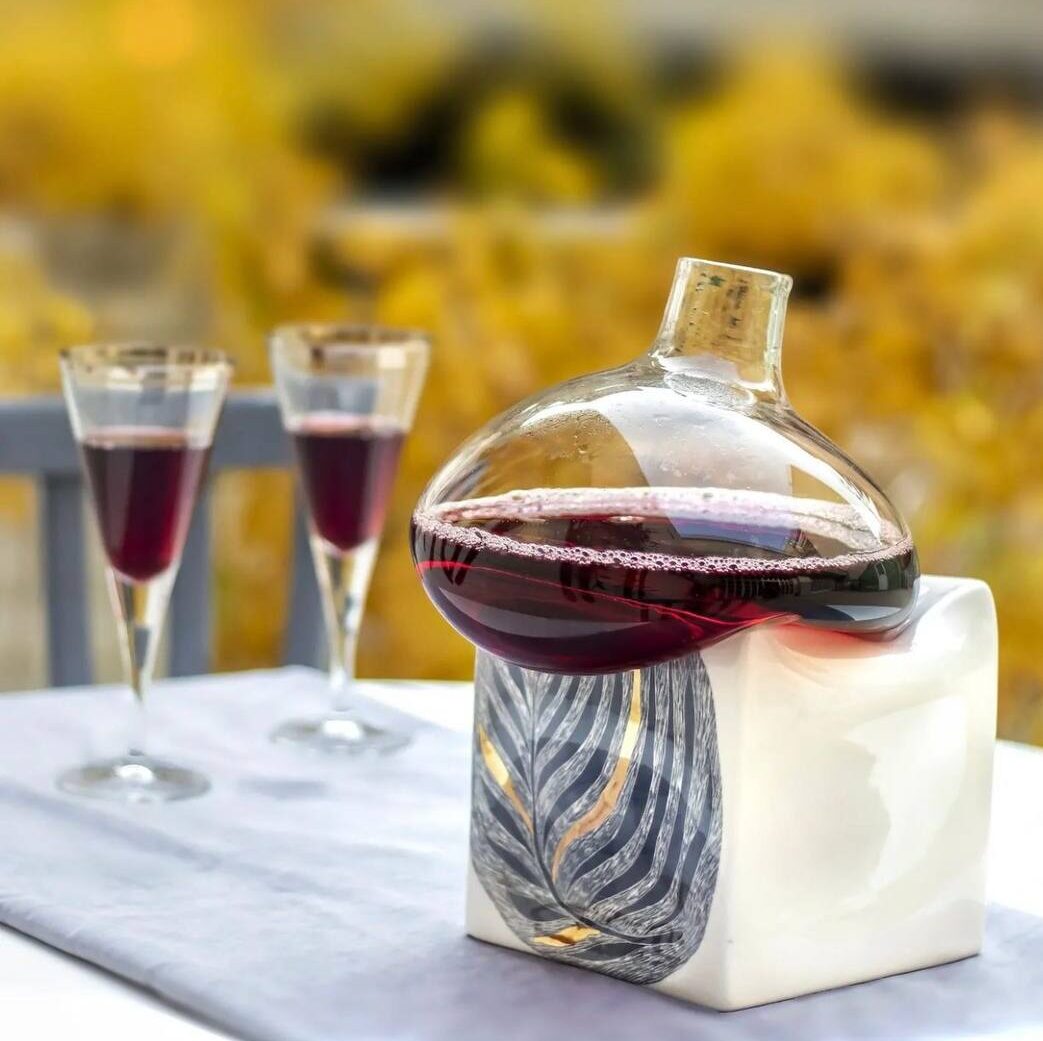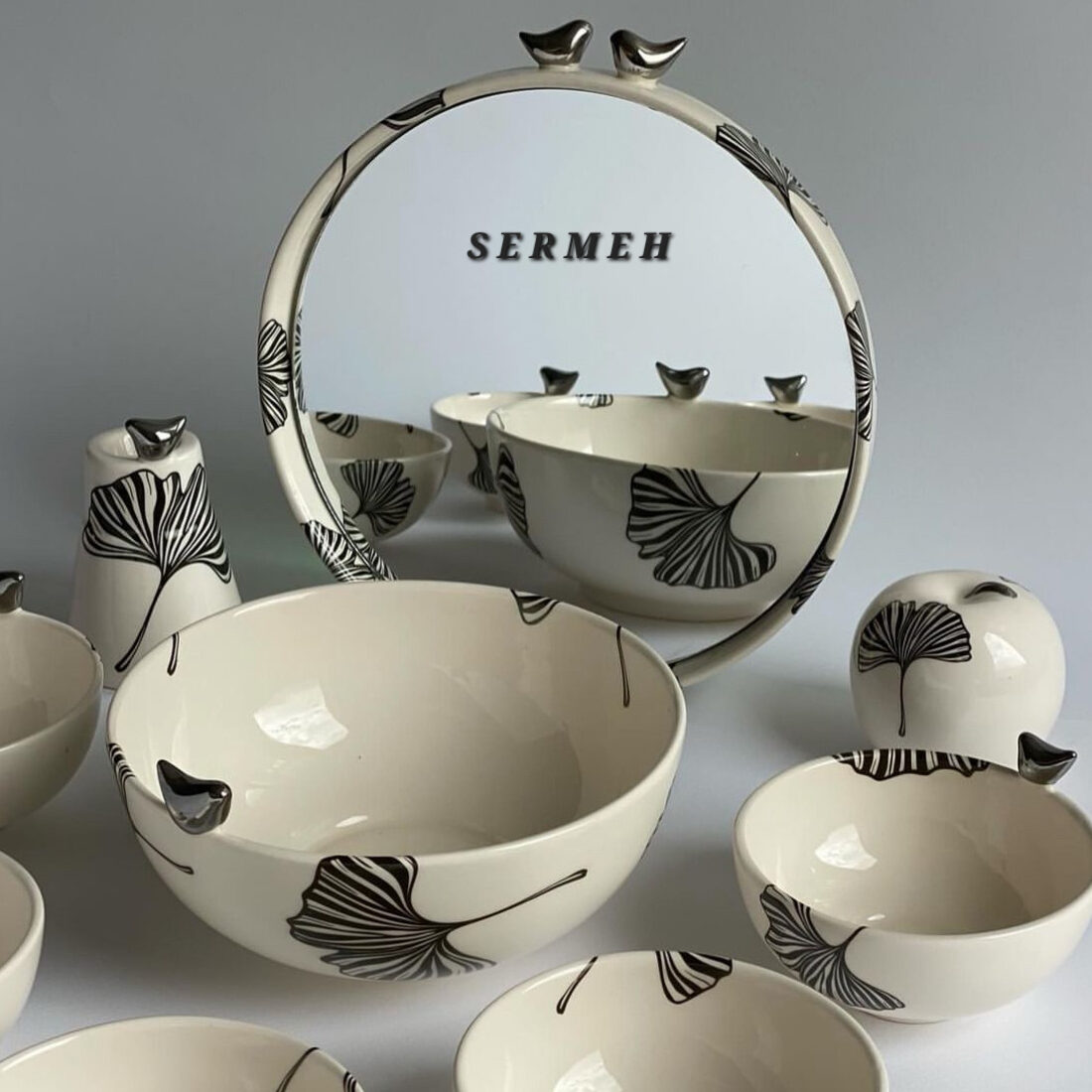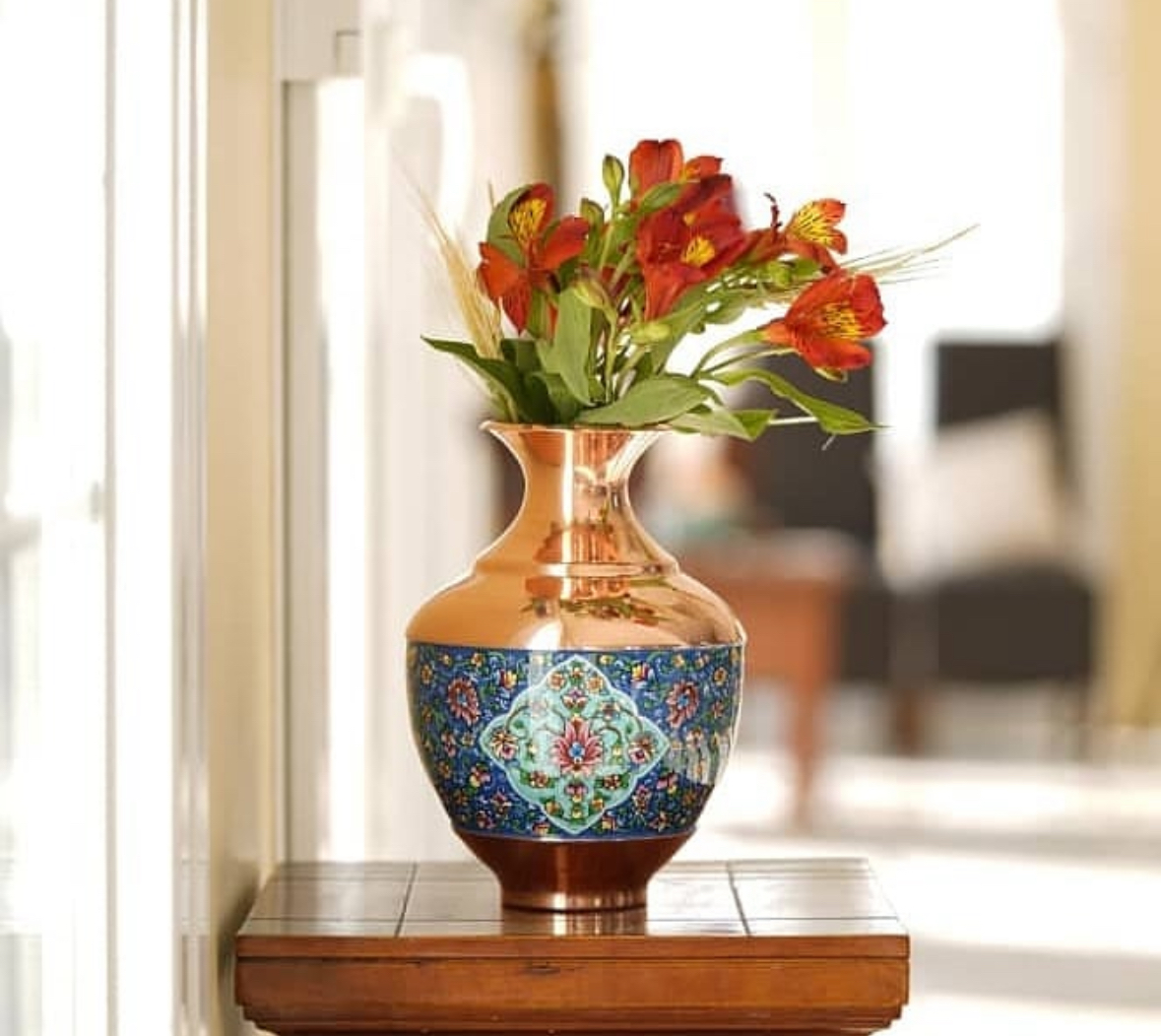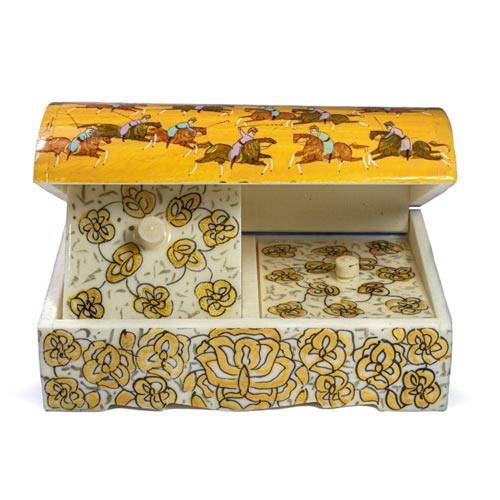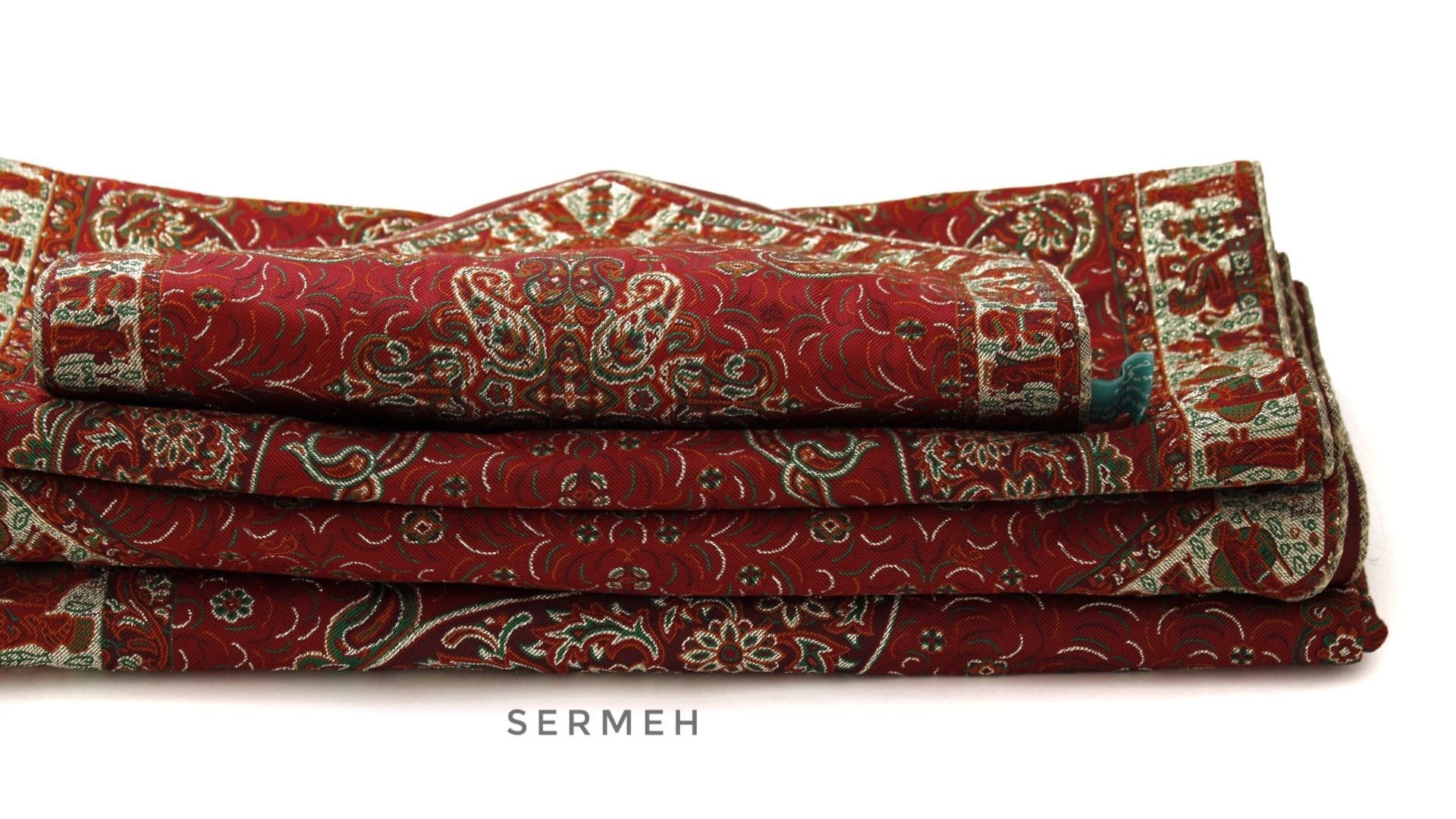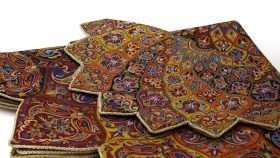Termeh is a fine handmade fabric that is made of two strands of woven yarn, the warp and the weft. The weft is usually woven more loosely than the warp. Termeh Luxury Persian Fabric is mostly made of wool or silk and decorated with traditional Iranian motifs.
What is Termeh?
Termeh is a precious fabric woven from very fine fibres, which is one of the exquisite textile handicrafts of Iran.
Termeh is a type of traditional Iranian textile that has been produced in Greater Iran since ancient times. Termeh is mostly used in various products such as Termeh tablecloths, runners, cushions, rugs, bedspreads, ties, clothes, etc.
Termeh History
In the beginning, Zoroastrians were the founders of the art of Termeh weaving and used it to sew traditional and religious pants and other clothes, especially for their ceremonies and celebrations they were using the striped type as a waist scarf.
Termeh is usually identified by its paisley pattern, which has its own story and description. The symbol and role of the Paisley Pattern in Termeh are rooted in the original Iranian-Zoroastrian culture, which represents a bent Cypress Tree.
A bent Cypress Tree represents Modesty and humility to God (Ahuramazda). There is a story that Zarathustra, the ancient prophet of Iran, planted this heavenly tree in front of the fire temple, and since then this bent cypress has been used as a symbol of sacred and Ahuraian role in the Termeh exquisite fabric. Luxury Persian Tablecloth (Termeh)
Earlier, all Termeh was woven completely handmade without the intervention of any machine. Later in the following centuries, traditional Termeh weaving machines were made little by little.
Until forty or fifty years ago, all Termeh was woven with the same traditional machines. Recently the new machines could produce different qualities and thicknesses of silk and in variable widths.
Weaving Termeh dates back to the beginning of the Safavid era (16th century) in Iran. Of course, some believe that Termeh originated in central Asia and mostly in Kashmir Mountains and some others believe that it originated in Iran and was later transferred to Kashmir. What is known for a fact is that Iranians have a special taste in designing motifs and patterns for this fine fabric. The art of Weaving Termeh reached its peak during Abbas Shah of the Safavid Dynasty; it turned out to be one of the most important export products of Iran and became widely known in the world.
*Buy online Persian termeh*
Steps in Weaving Termeh Luxury Persian Fabric
Material
The first step to weaving Termeh is to provide the raw material. Termeh is usually made of wool or silk. White wool, however, is the most common because it can be dyed into different colours. Termeh wool must be of fine quality and must be longer. Wool from the sheep in Iran has such quality and is, to a large extent, white and shining. Spinning, twisting, dyeing, and weaving the wool progressed a great deal in 16th-century Iran. Shah Abbas Safavi invited designers from China and Armenia to teach their methods to Iranian artists. That is why Termeh’s designs became stunning during the Safavid period.
-
A)Washing the Wool:
The first step after obtaining good quality wool is to wash the wool clean of dirt and fat. This should be done before dyeing the wool. In Iran before shearing, the sheep are washed with water for about ten minutes, then the fat is washed from the fleece by washing it in Alkali and again the fleece is rinsed in water. In this way, it turns clean and shining.
-
B) Bleaching the Wool:
There are two methods to bleach the fleece.
The first method: the fleece is spread on grass. In this way, it will absorb the dew and in the process of its evaporation, the fleece turns white. This process is carried out several times.
The second method:
The fleece is whitened using sulphate.
-
C) Fixing the Color:
When the fleece is white enough, it is dyed, and this is one of the most important steps in preparing the wool for Termeh. Since the colours that are used directly on the wool do not endure much, a material called Dandaneh is used to solve this problem. Dandaneh is a chemical which can increase the absorption of colour. This chemical needs to be purified before it is used so that it functions better. The most frequently used types of Dandaneh include White alum, tin, zinc, chlorine, lead, and other sulphates, minerals, etc.
-
D) Dyeing with Plant Based Colors
The colours of Iranian Termeh are usually extracted from plants. These colours may be obtained from the roots, trunks, leaves, flowers, fruits husks, or trunks of plants. This is because Termeh is a fabric that is very difficult to maintain, it is easily damaged by moisture and moth.
Termeh Types
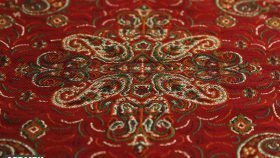
- Charged Shawl: the size is 1.5 in 1.5 and it is used as a head cover or a wrapping cloth; the motif is either a medallion design – Corner or flowers.
- Striped Shawl: comes in two types:
- Wide
- Narrow
Depending on people’s tastes they can be used by anyone.
- Atabaki Shawl: Cashmere type; it is made of very fine wool.
- Bandi Shawl: the pattern resembles bee hives; in each hole, there is a flower or a paisley woven.
- Moharramat Shawl: it is a kind of striped shawl with different size stripes
- Cashmere Shawl: various Cashmere weaving types; the best-known ones are: paisley, tree, and deer horn designs.
- Emerald Shawl: finest Cashmere shawl with an indigo background on which paisley motifs are woven in sharp colors, especially in emerald green
- Kerman Shawl: any Termeh shawl woven in Kerman province; they come in different types
- Amiri Shawl: As the name shows (Amiri meaning courtly), this type includes the Termeh shawls used in courts by courtiers; they are usually designed with paisley or gazelle-horn patterns
- Yazdi Shawl: any Termeh shawl woven in Yazd province that is usually striped or designed with Shah Abbassi flowers; this type is very old and rare.
Tools and Methods Of Termeh Luxury Persian Fabric
Termeh weaving machine, similar to most traditional waving machines, is made of wood. This machine is usually made by the artists themselves. Termeh machine has four levels (Chahar Verdi) and each level is controlled and moved by a separate pedal. Before the weaving starts, the machine needs to be prepared and the vertical threads, or warps, need to be fixed on the machine (called Chelleh-keshi in Farsi). Then the artist sits at the machine and her/his assistant controls the top part of the machine. The assistant’s job is to choose the threads and their colours. The motifs woven on Termeh are the result of the cooperation between the artist or the master and her/his assistant.
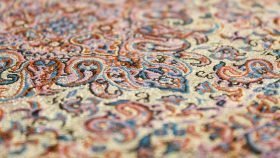
Another important issue in weaving Termeh is using threads in different sizes and how to place these threads. Since the colour of the warps (vertical threads) is stable and it is only the wefts that change colour, weaving this fabric and forming the motifs can be very difficult.
There is another method of weaving that is not very common. In this method the colourful wefts are not the main parts of the fabric, which means if the weft is removed the fabric does not fall apart, only the core weft appears from underneath. Most Cashmere shawls are woven in a way that the loose part of the weft is woven into the fabric and no loose threads can be seen on the back of the woven Termeh. However, in Kerman Shawl loose threads can be seen on the back side of the fabric. Khorasan and Yazd shawls are also the same.
Colours and Sources Of Termeh Luxury Persian Fabric
Orange Common Madder: Red, purple
Henna leaf: Red, brown, dark blue
Mulberry root: yellow
Walnut tree bark: brown
Pomegranate husk: brown
Red Oak bark: brownish red
Poppy husk: brown
Sumac leaf: brown
Apple tree bark: yellow
One of the most important tasks of a weaver is to select the right colours which are in harmony with each other. These colors might be chosen from the same shade or they might be complementary colors.
Termeh Uses
Termeh had a variety of uses in the past, including making fine clothes for courtiers and noblemen and women, curtains, praying rugs, wedding gifts, and so on. Today, Termeh is used in furniture, backrest pillows, and tablecloths. Termeh was used in the past mostly by kings and nobles but today it is used mostly by the middle and upper class. It is usually presented as a gift for weddings, and formal and family ceremonies.

